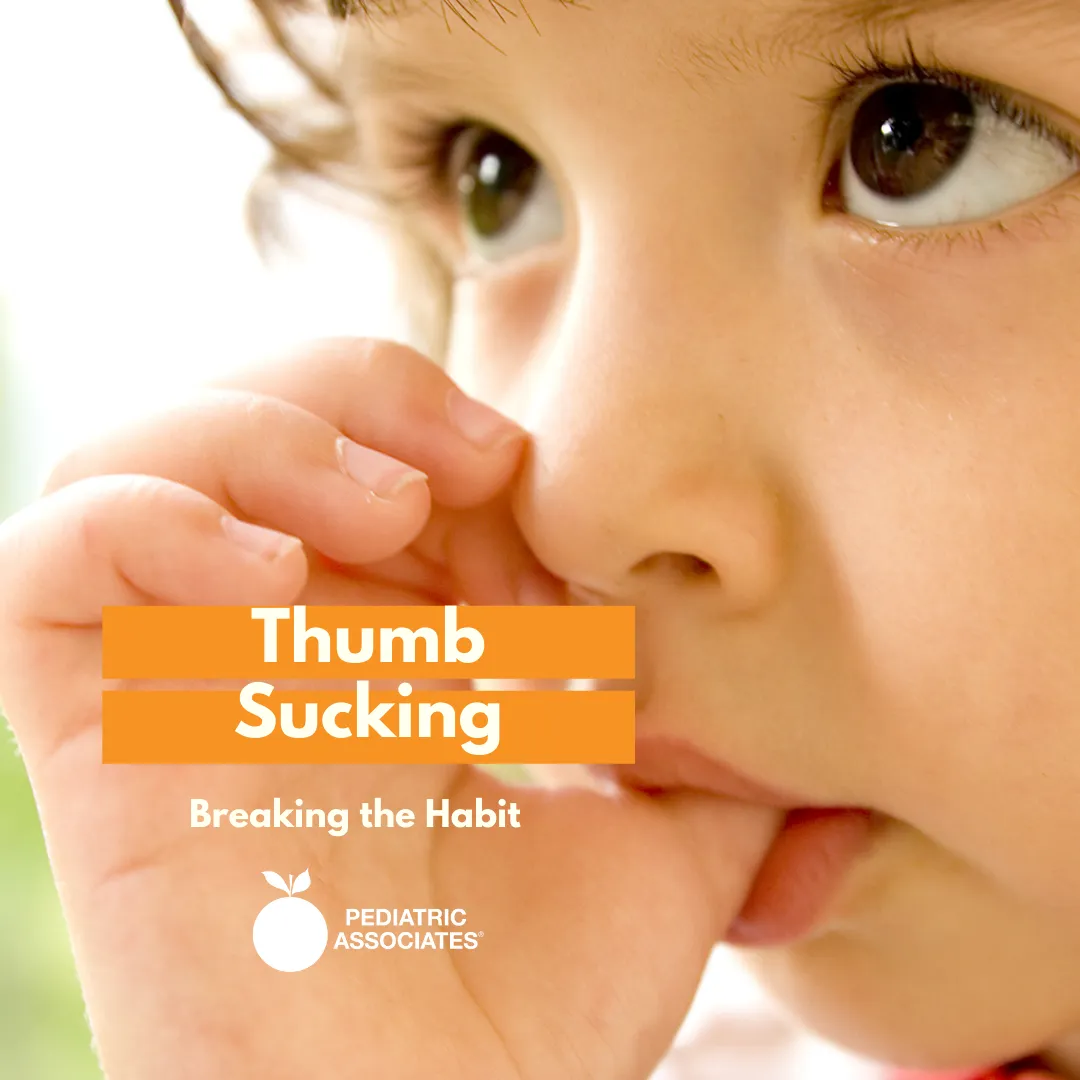
Thumb Sucking: Breaking the Habit
Thumb sucking is very natural for babies and young children. It’s a form of exploration early on and can also be self-soothing.
So the $10 million dollar question frequently asked by parents … how do I balance my child’s desire with other interventions?
If your child is a newborn, you can introduce a pacifier. This is a common replacement for the child’s desire to suck a thumb as it’s also soothing and helps their desire for exploring things with their mouth. If you see thumb sucking during play in infancy, you can gently replace it with a teething toy or safe toy that they can mouth so they understand that their innate desire to put things in their mouth is okay. However, you are shifting the focus to something that’s not their thumb.
As your child becomes a toddler, thumb-sucking can become a hard habit to break.
Here are some tips:
- Try to avoid the words “take your thumb out” or “stop putting your thumb in your mouth.” When you say these things, they will subconsciously want to do it more. Imagine if you had a habit and someone kept asking why you were doing it. It would make you want to do it more.
- Instead, focus on positive reinforcement when hands are out of their mouth: “I see you keeping your hand out of your mouth. That’s great.”
- Make it fun. If you notice their hands or thumb is in their mouth, excitedly say, “Show me hands in the air” and mimic putting your hands in the air. They should follow along! This fun tip can redirect them from the act of sucking their fingers. When their hands are in the air, reinforce that: “Great job! Hands in the air!!”. Applaud the hands being out of the mouth versus getting disappointed when the hands are in the mouth.
- Identify any triggers. Are they doing it when they’re bored, idle or frustrated?
- If you identify a trigger, find a healthy distraction. If they are sucking their thumb while watching TV, give them a lovey item to cuddle with. If they’re sucking their thumb while bored, give them a toy like a pop-it fidget toy so they can play with that. If it’s while they are frustrated, teach healthy coping skills like breathing or dancing when calm.
- For older children (4+), you can explain why you want their hands out of their mouth. “Nice job keeping your hands out of your mouth. That helps us keep germs away! Why do we keep our hands out of our mouth?” While brushing teeth, explain how nice the teeth look and how keeping fingers out of the mouth keeps them nice and straight.
- For some children, a sticker chart may work where they get a sticker for every day they go without sucking their thumb. Once they accumulate 5 stickers, they can get an experience (outing with you or a loved one).
- If your child is over 3 years old and it’s causing issues, speak to your dentist about thumb guards. Popular brands include Dr. Thumb, Dr. Finger and TGuard. Another option is something called Mavala Stop, which is a bitter nail polish. Some kids may not be averse to the taste, while others don’t like the bitter smell and become turned off to thumb-sucking.
The most important take-home is to try to focus on the positive reinforcement versus the negative action. Also, avoid the big reactions when they do have their thumb in their mouth. The more we get upset or try to pull their hands out aggressively, the more likely they may turn to it for comfort.
This blog was written by Pediatric Associates’ Dr. Mona Amin

- Parenting Tips
- babies
- bad habits
- breaking the habit
- habits
- parenting
- thumb sucker
- thumb sucking
- toddlers
2022-03-11T13:35:59-05:00